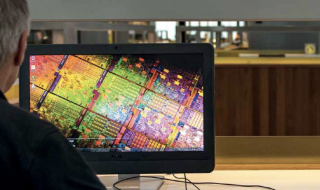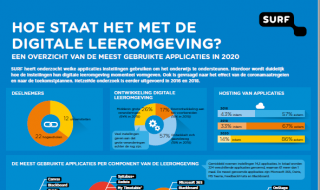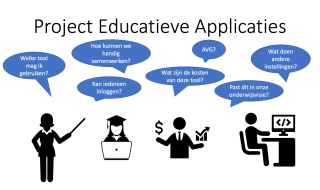Digital learning environment
Reports and publications digital learning environment
Downloads
Download the publication.

In 2012, SURF developed a vision for digital learning environments called component vision. In it, we present the digital learning environment as 'the set of systems, organised by an institution, aimed at teaching and learning'. In 2022, together with 30 experts, SURF developed a report on the impact of developments within education and technology on the digital learning environment.
For the reassessment of the vision of the digital learning environment, SURF also developed two working forms. These tools can be used if you want to start re-evaluating or developing the DLO vision yourself. Would you like to know more about this? Then get in touch.
Setting up the digital learning environment
SURF developed a publication that addresses common components of the educational vision and what they mean for the design of the learning environment.
Technology digital learning environment

The publication below provides an overview of data and functionalities that components in the digital learning environment can have, how they are related to each other and what standards are needed to make them work together as a whole.
SURF developed a demo environment for the personal and flexible learning environment. In 2017 and 2018, several suppliers and institutions already started working on this. In pilots, a number of suppliers tried to get their products working by solving the integration issues that arise when linking to the modular learning environment. They have done this in the SURF demo environment in which relevant standards such as LTI, xAPI, LIS, OOAPI, SAML/VOOT, could be implemented and tested.
Discover the lessons learned from the SURF demo modular learning environment
Open standards play an important role within digital learning environments. Watch the video below to gain insight into the most commonly used open standards in digital learning environments.
Procurement digital learning environment

SURF developed a guide to the procurement of components for the digital learning environment. This guide will tell you when tendering is necessary, the main points of tendering and the procedures an institution can choose from. We also discuss innovative procurement strategies and points for attention when procuring cloud services.
SURF produced an infographic showing how institutions are currently designing their digital learning environment. You will also discover the effect of corona measures and the future plans of institutions. View the overview of the most frequently used applications in 2020.
Further development of digital learning environment

In the publication below, you will read how to use user feedback to improve the user experience in compound learning environments. You will also discover the lessons learned from institutions that have been working on this topic for some time.
Video with user experiences from Ton Gloudemans (Inholland), Pieter van Langen (HvA) and Tim Fleumer (Rotterdam University of Applied Sciences)
In the thematic issue below, five institutions show how they keep their digital learning environment up-to-date and the lessons learned. You can also read about the steps you can take to achieve a well-designed learning environment.
How do you achieve an optimal user experience of the modular digital learning environment? This is a challenge for many institutions. The guide below tells you which elements influence the user experience. It will help you optimise the user experience of your own learning environment.

Educational Applications Project
Getting a better grip on your educational institution's application landscape? That is important for your institution, but also for your users who use many educational applications. With the educational applications project, SURF is looking for a joint solution to share information about applications via a platform.
View the results of the pilot held in the fact sheet below:

